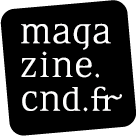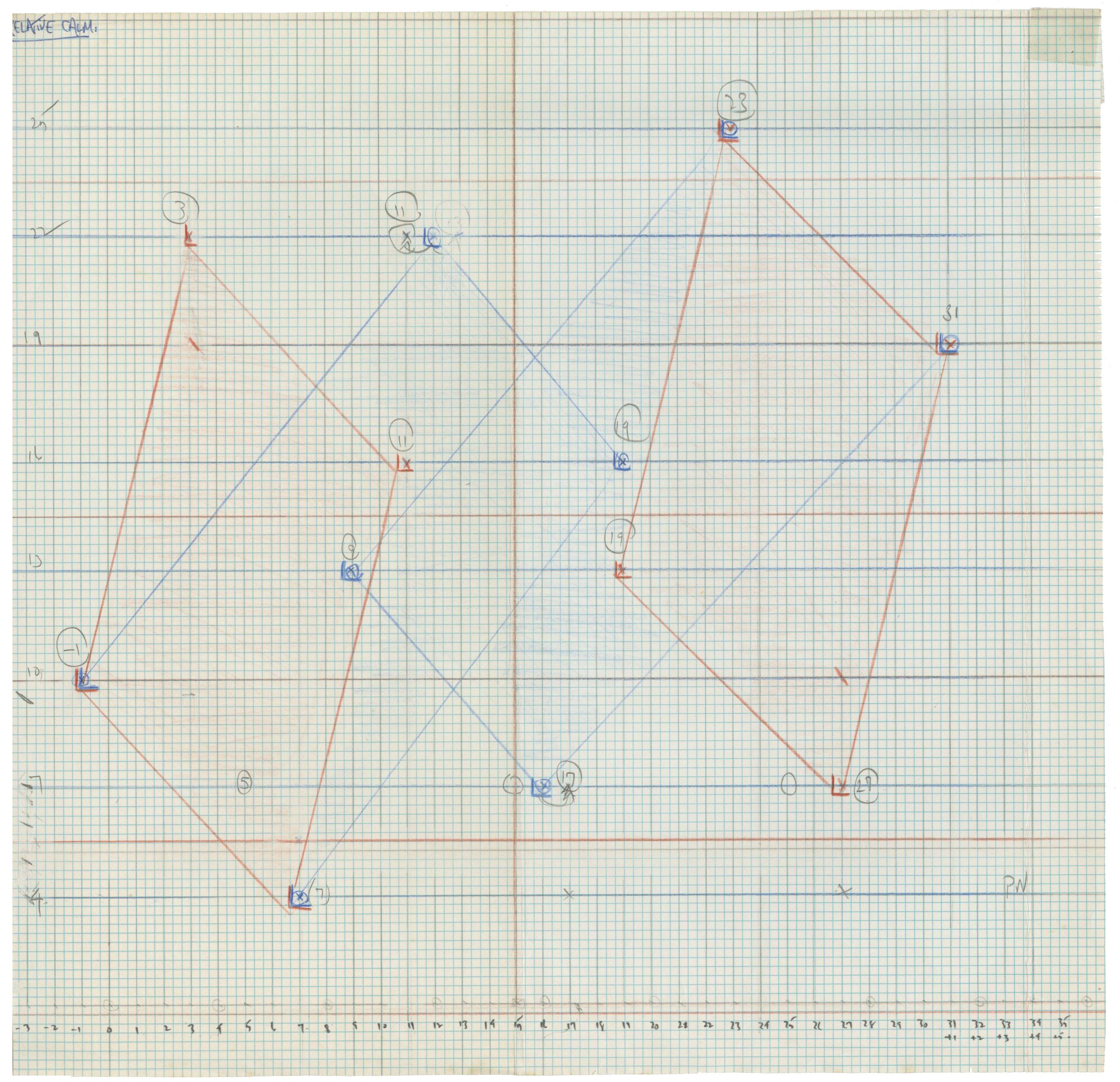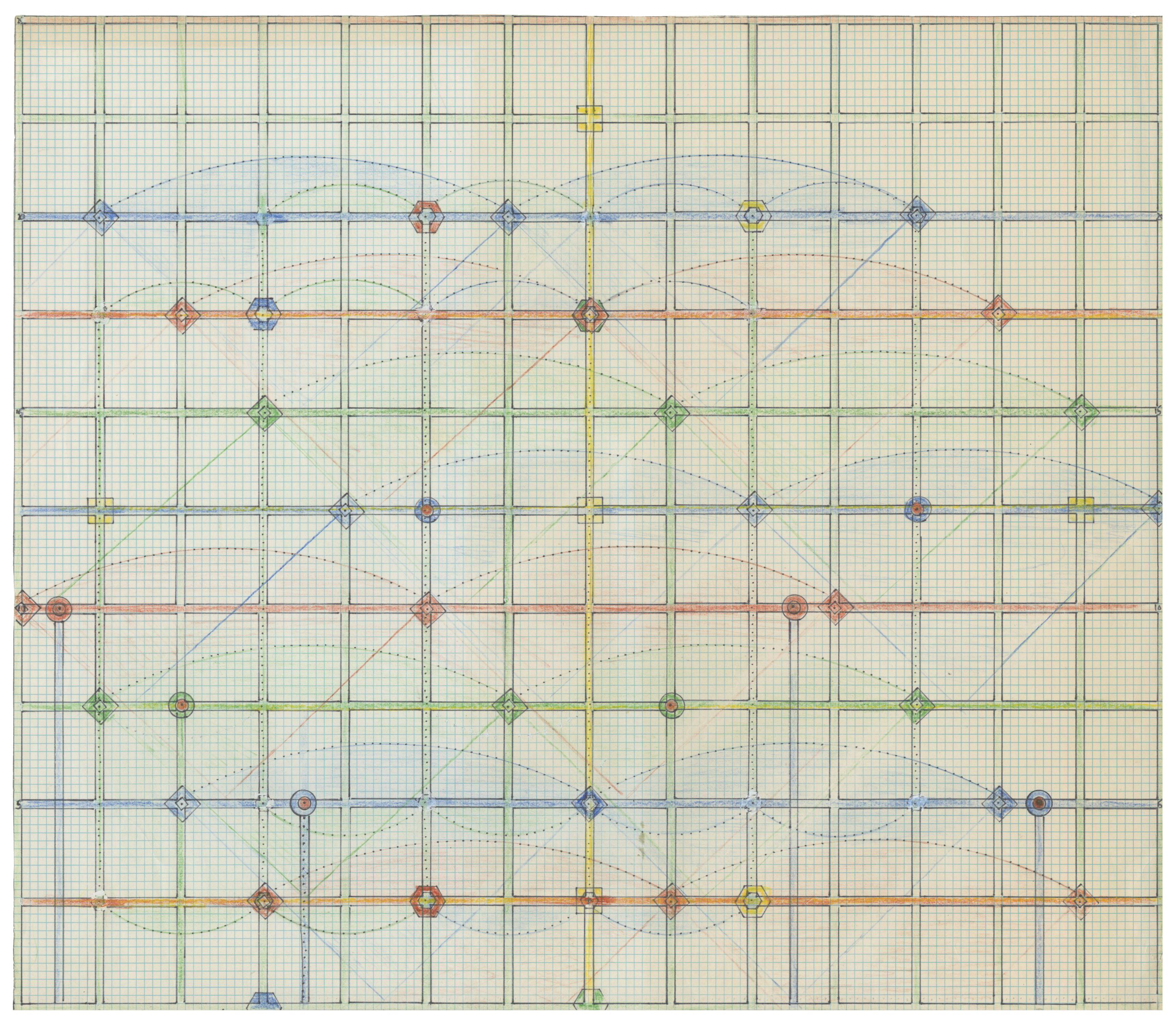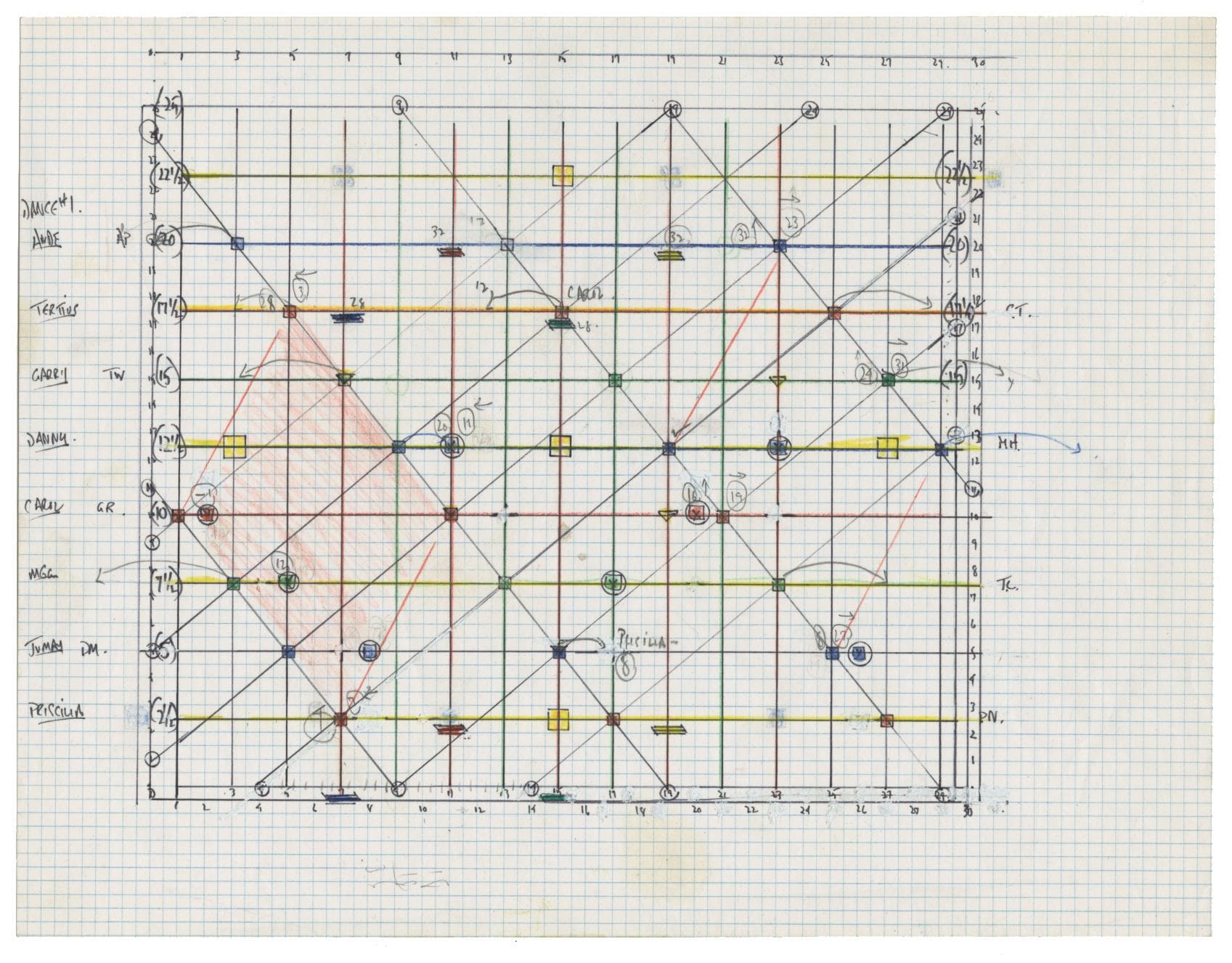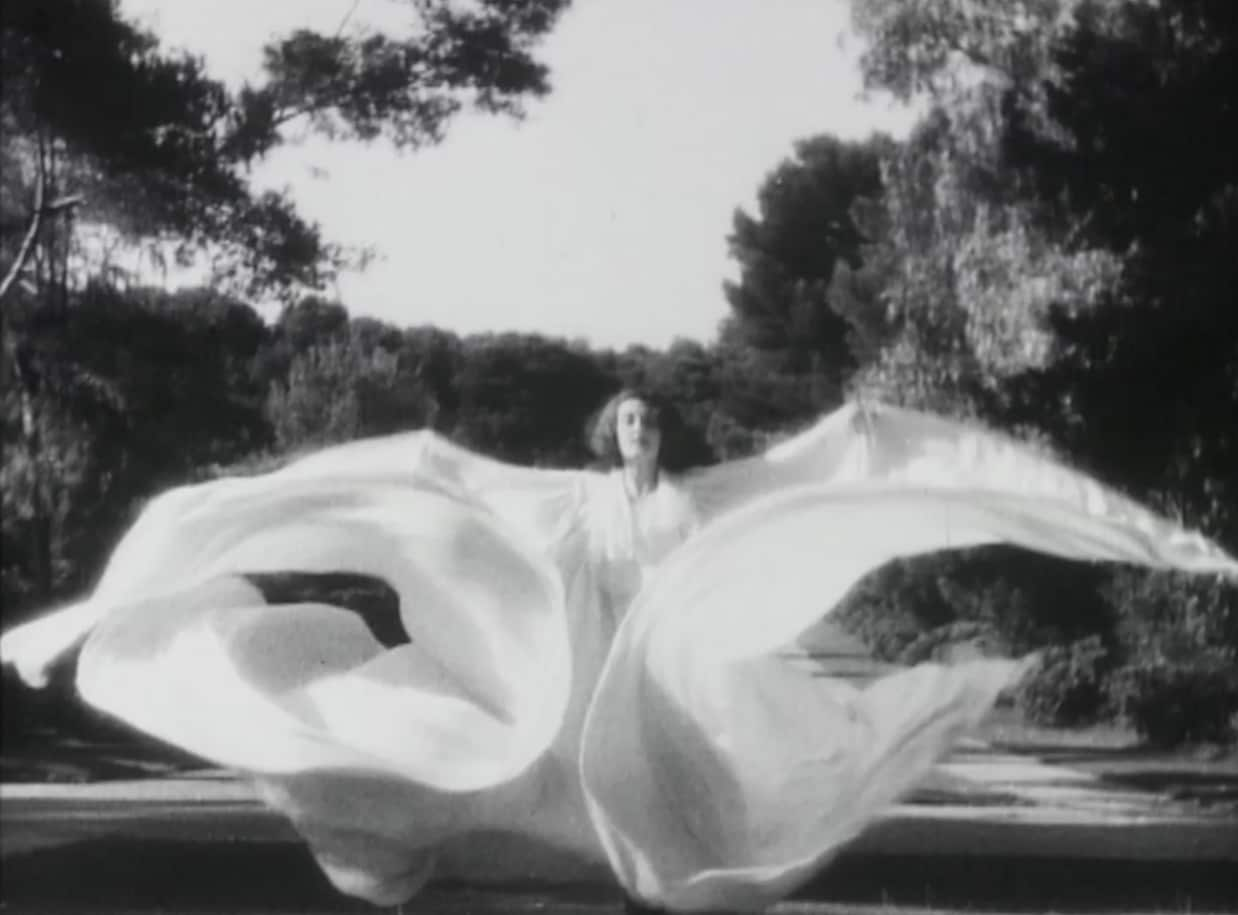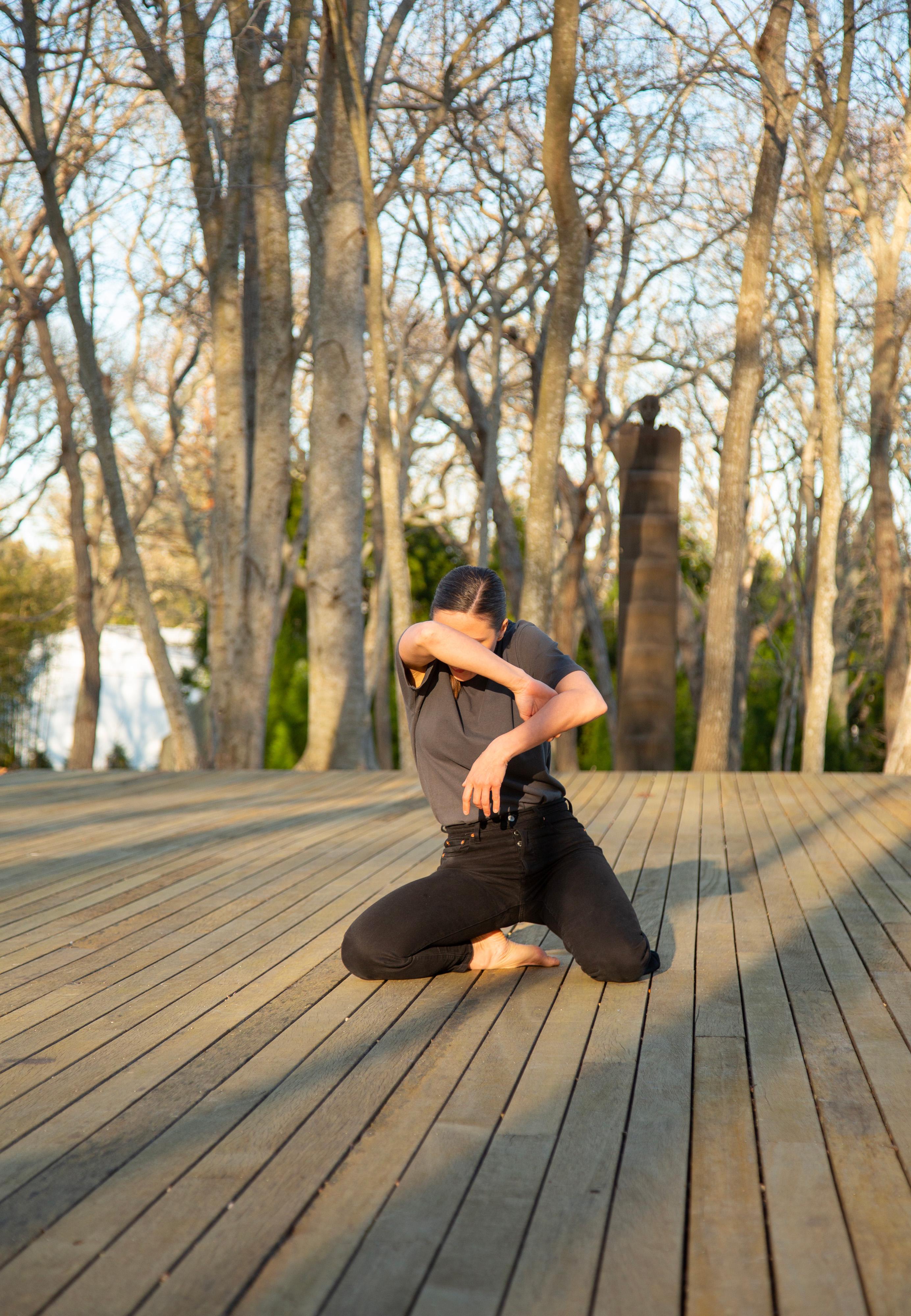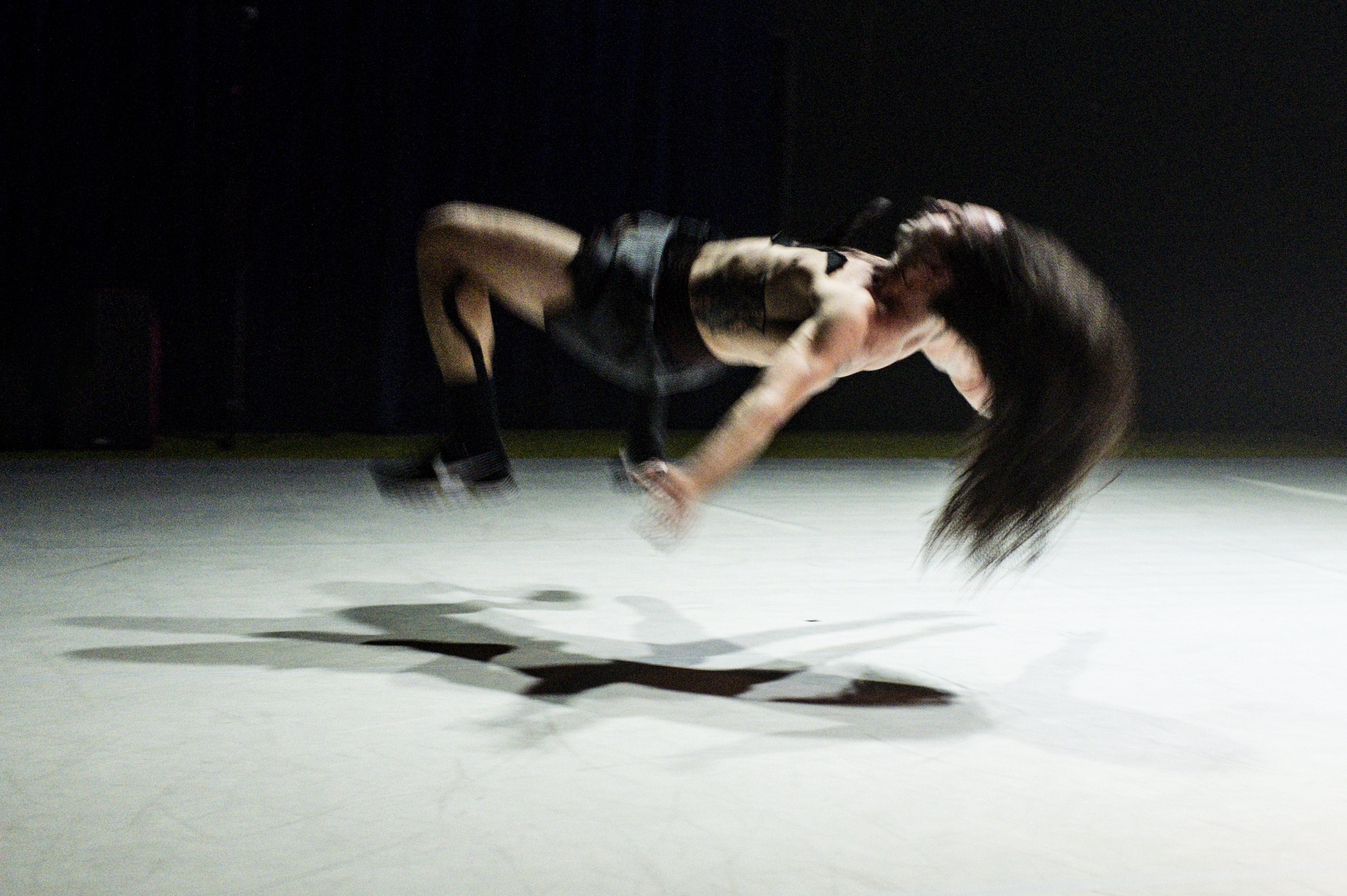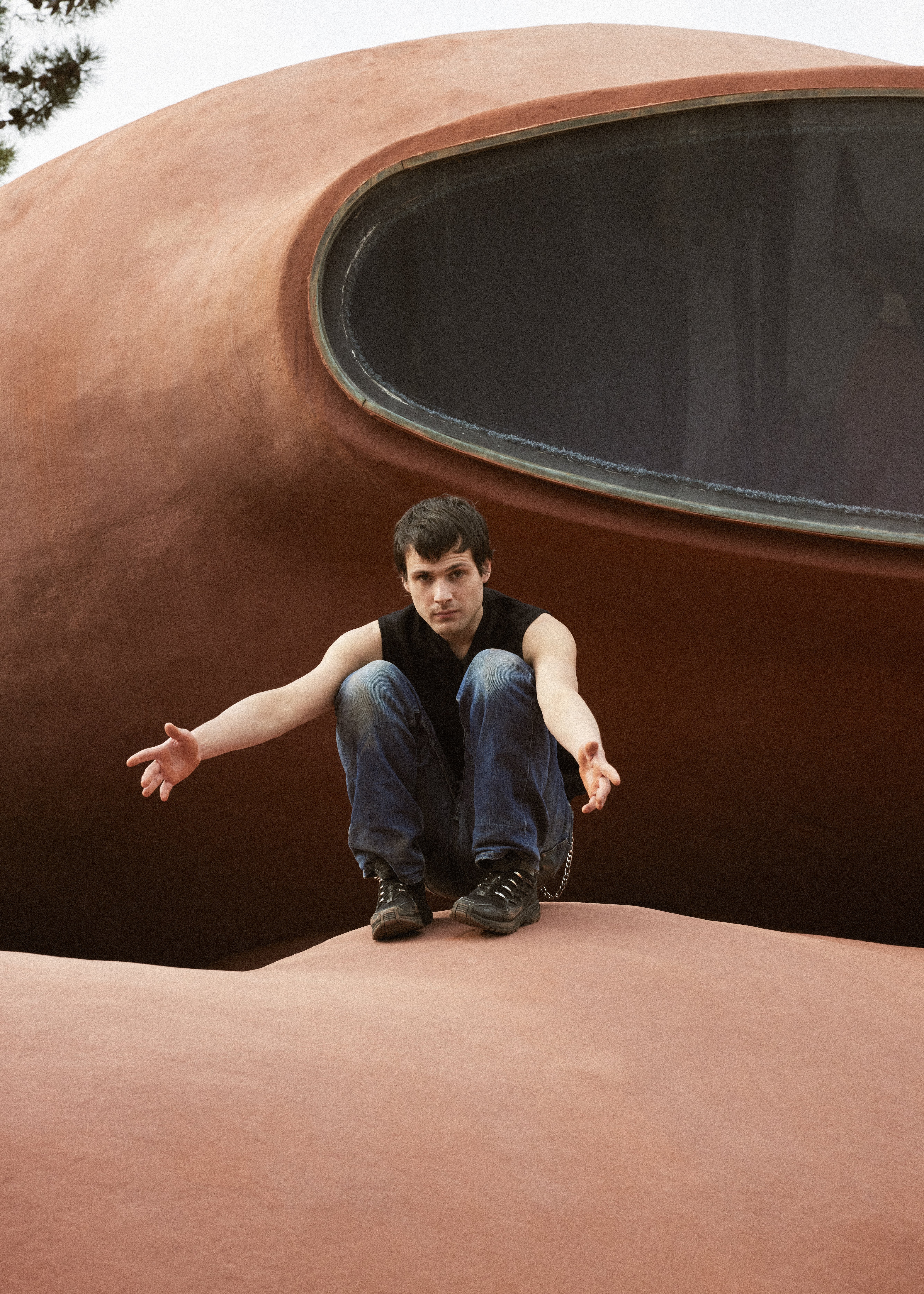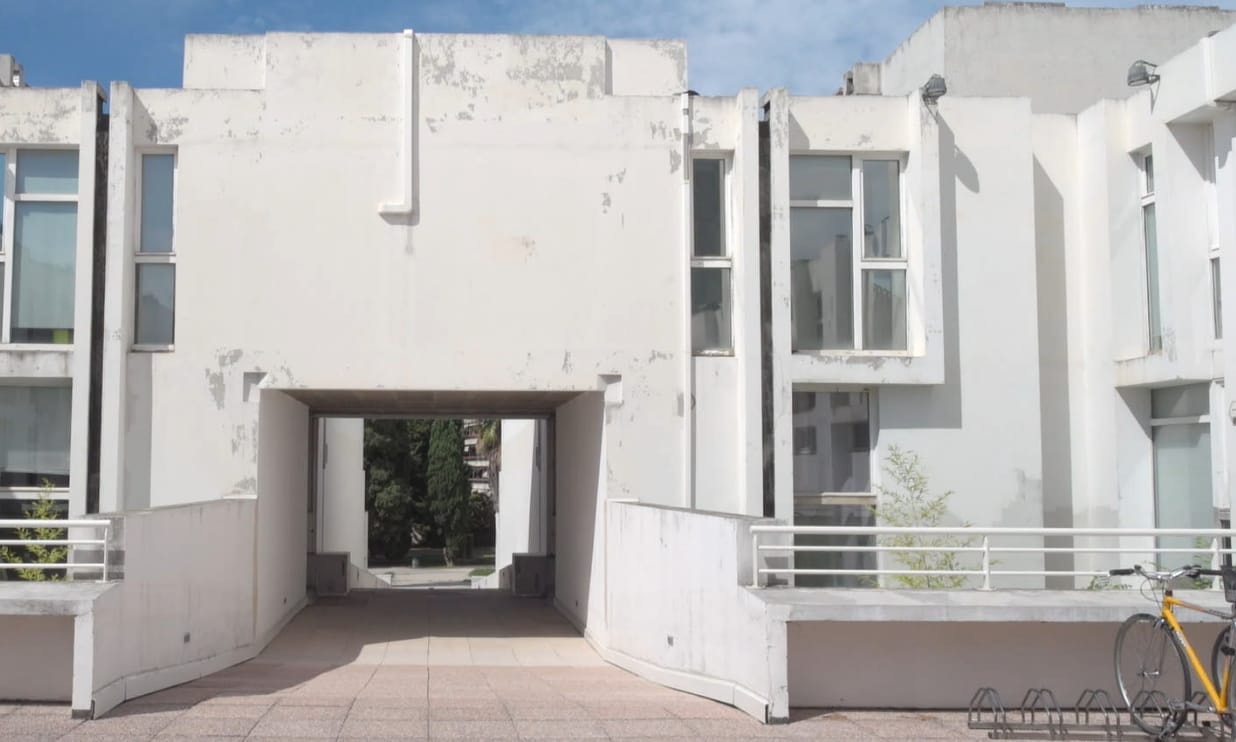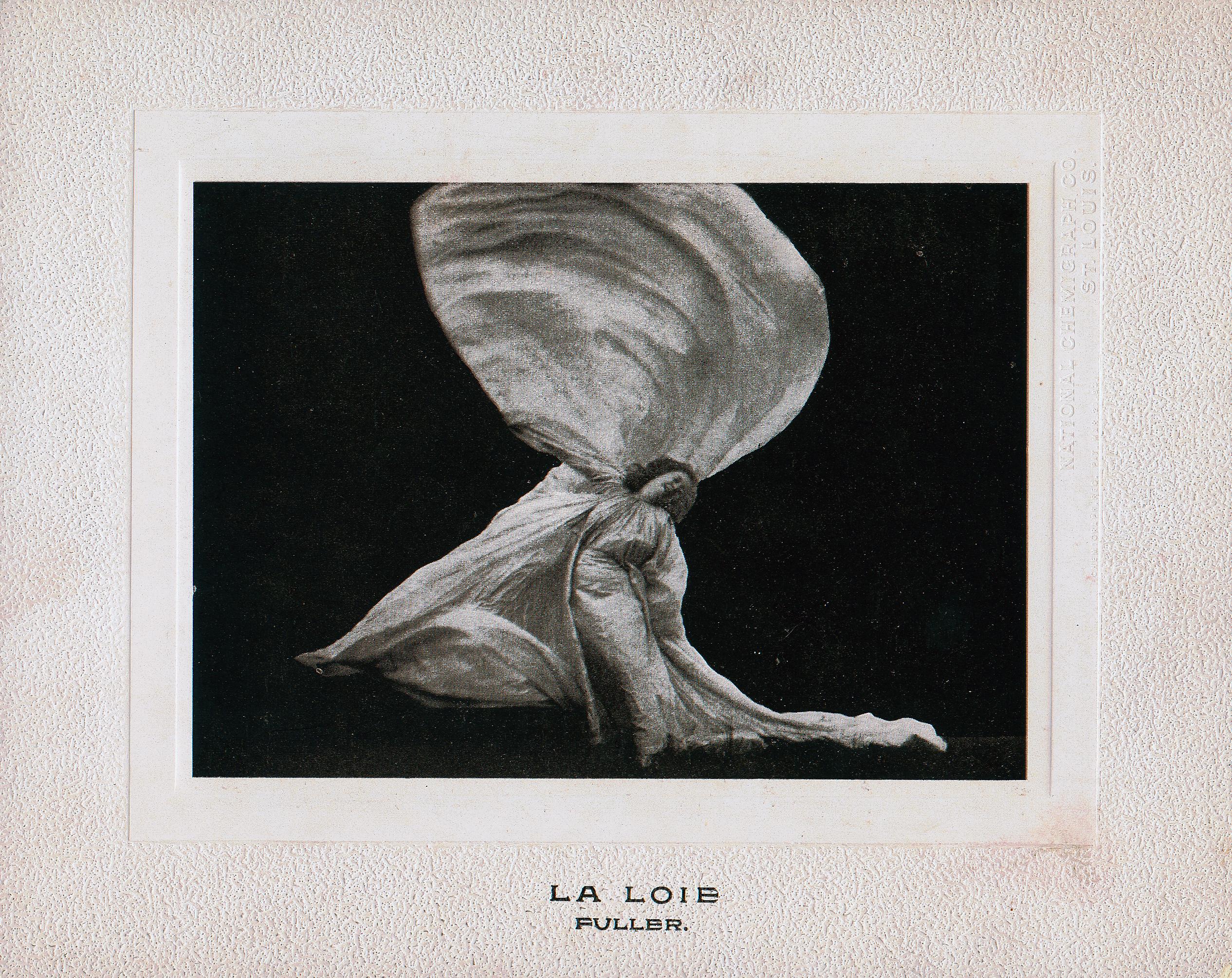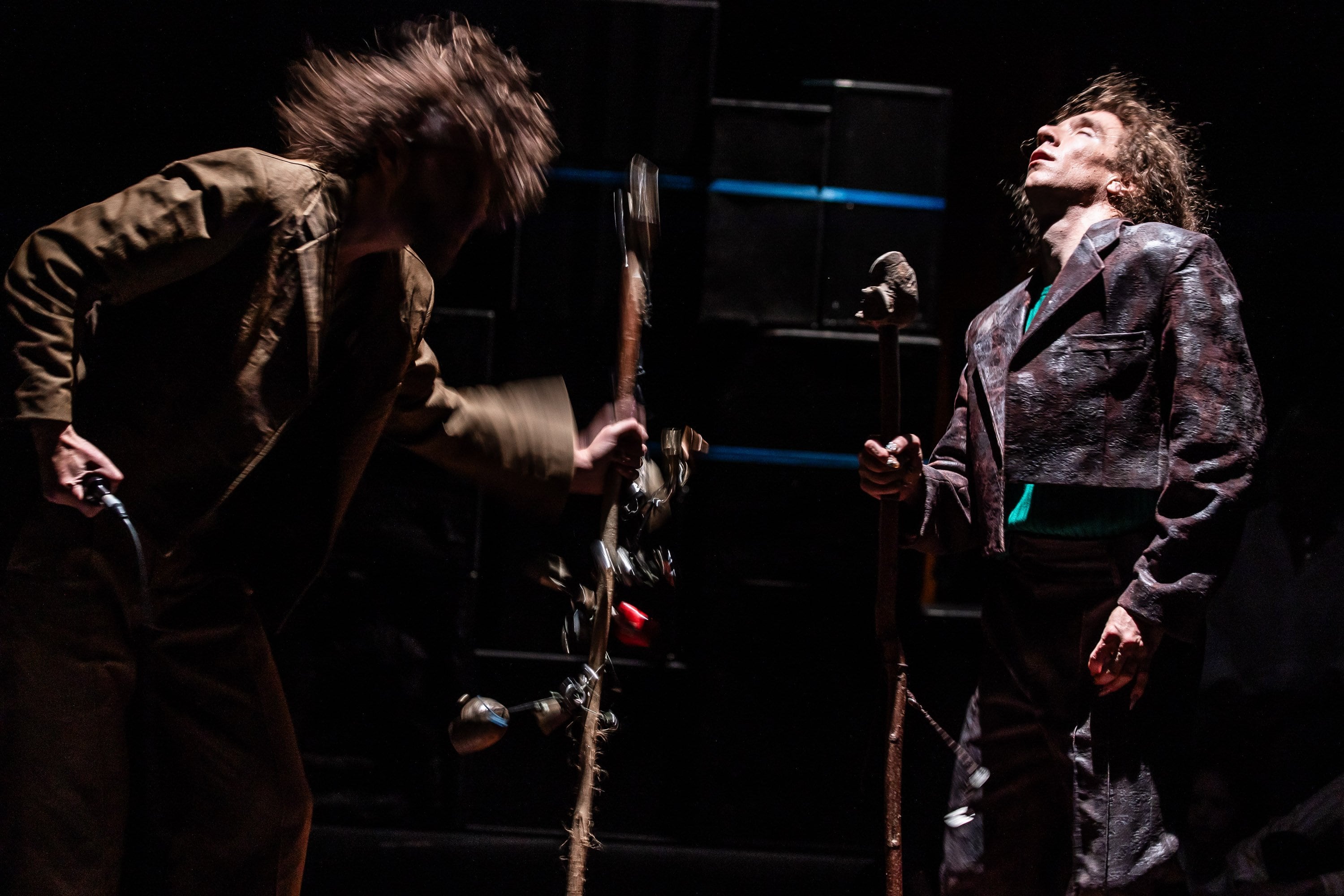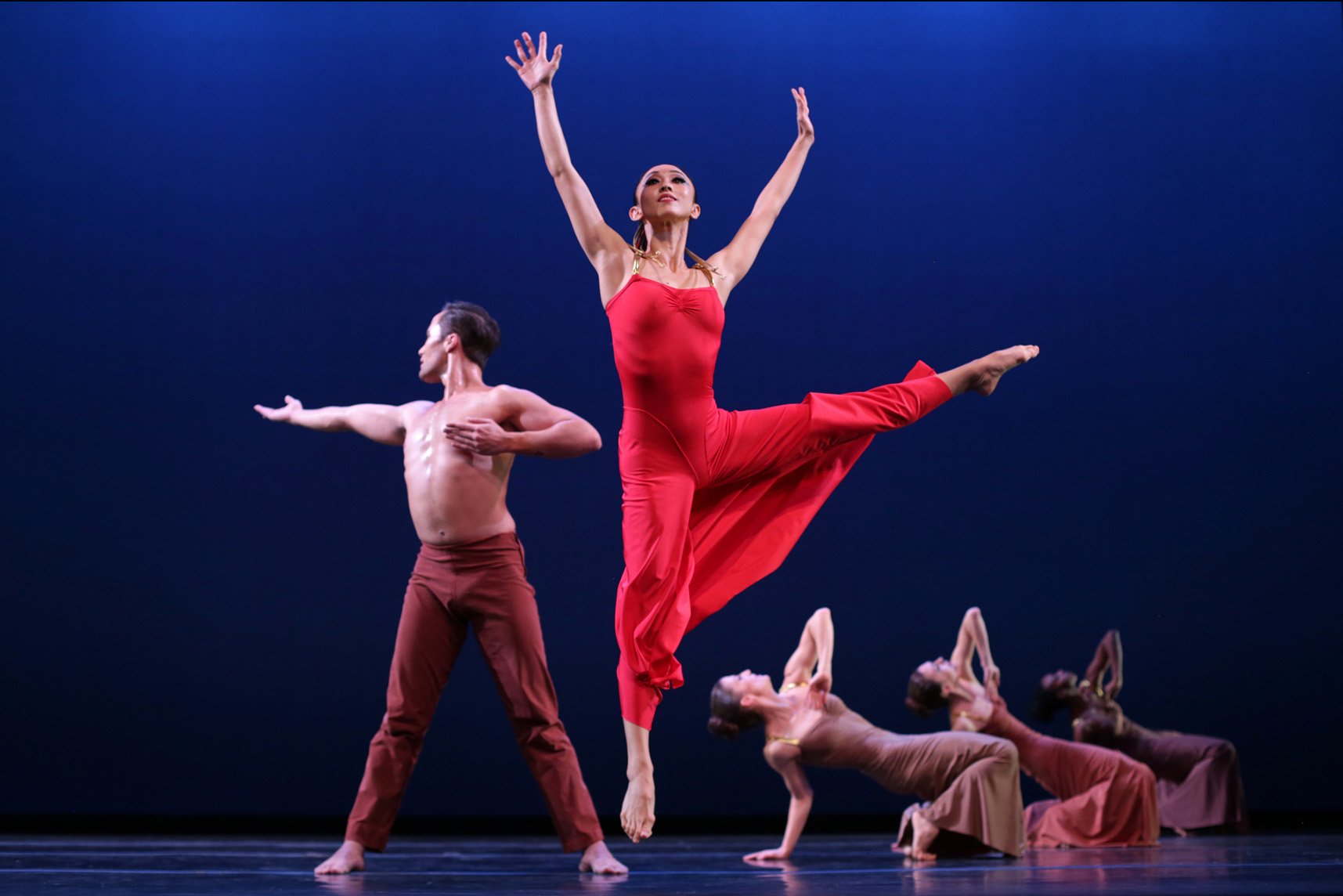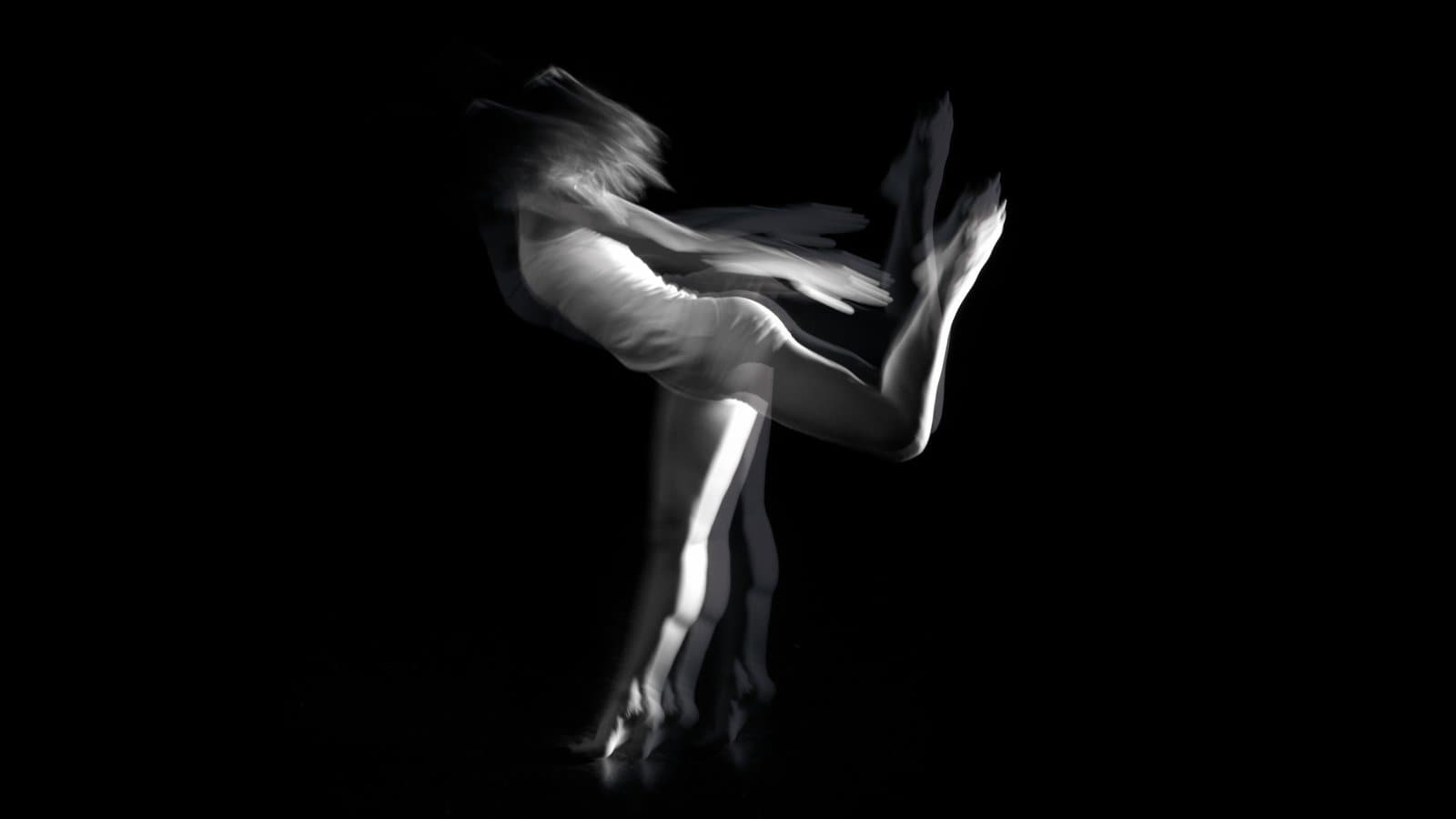Almost 25 years after leaving New York and Lucinda Childs' company, where he danced for about a decade, Michele Pogliani was asked to work with the American choreographer and Robert Wilson and help reinvent their 1981 work Relative Calm. This artistic reunion led to a new, almost entirely updated version in 2022, danced by the performers of MP3 Dance Project, Pogliani’s own company. Ahead of the first Paris performances of this revival, the Italian choreographer and dancer revisited his memories by exploring Relative Calm’s archives: original sketches and scores, drawn by Lucinda Childs and preserved at the CN D library.
When I joined Lucinda Childs’ company in 1985, “Rise,” the first part of Relative Calm, was one of the first repertory pieces I learned. My one regret is that I never danced the other sections of this 1981 piece, “Return” or “Race.” I spent almost 10 years working alongside Lucinda in New York before returning to Italy and founding my own company. One day in 2020, I received a phone call from a producer who suggested I work with Lucinda Childs and Bob Wilson on a re-creation of Relative Calm. He said to me: “She knows exactly what you've been doing all these years...” It was both a bit frightening and very moving. I joined the project with 12 dancers from my company, MP3 Dance Project. “Rise” is the only part of the original work that has survived.
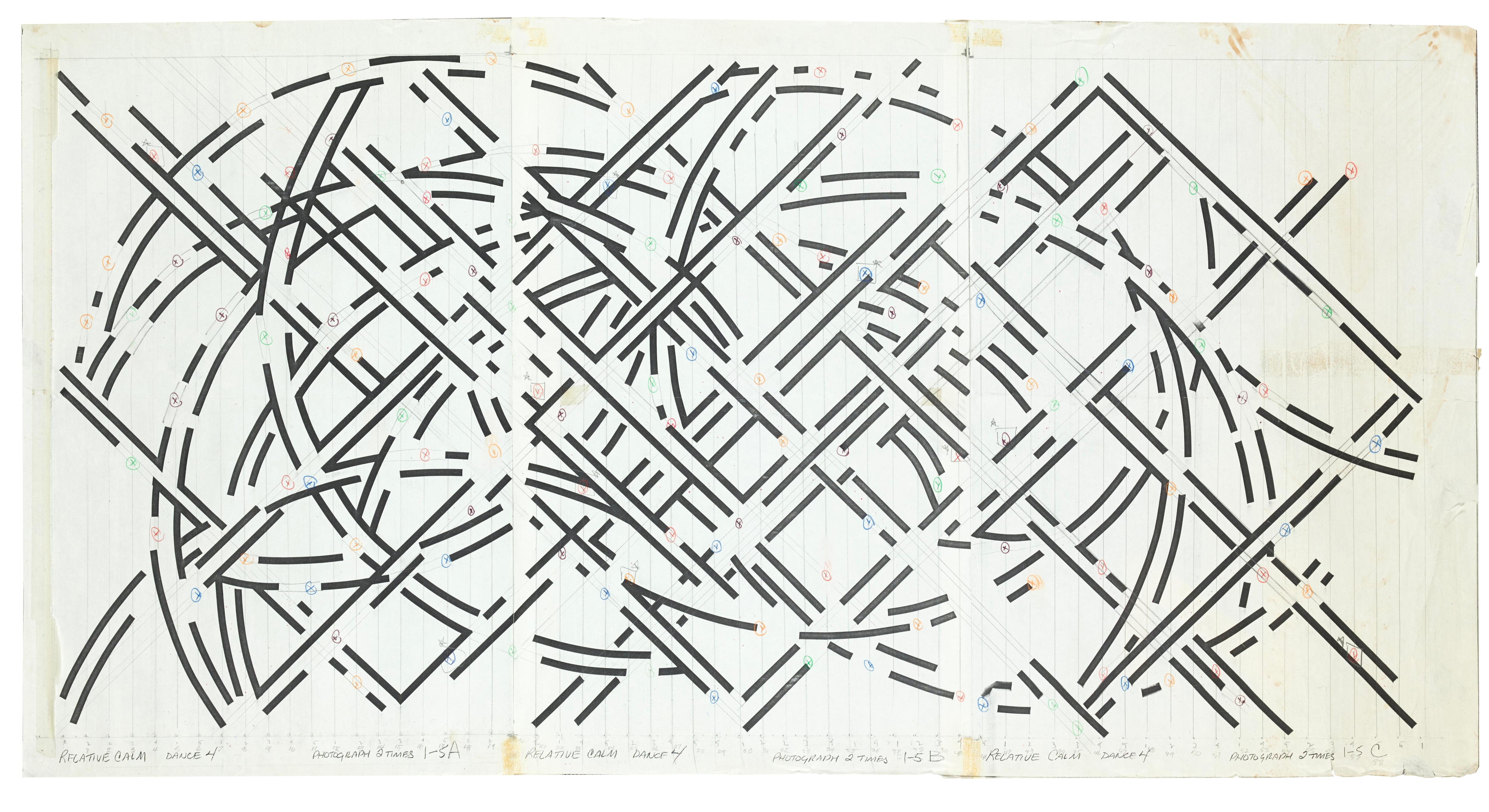 © Croquis de parcours manuscrits couleurs de la partie 4 "Return" de Relative Calm (1981) ayant servi à l'élaboration des maquettes pour les motifs lumineux. Lucinda Childs, Fond Lucinda Childs CN D.
© Croquis de parcours manuscrits couleurs de la partie 4 "Return" de Relative Calm (1981) ayant servi à l'élaboration des maquettes pour les motifs lumineux. Lucinda Childs, Fond Lucinda Childs CN D.
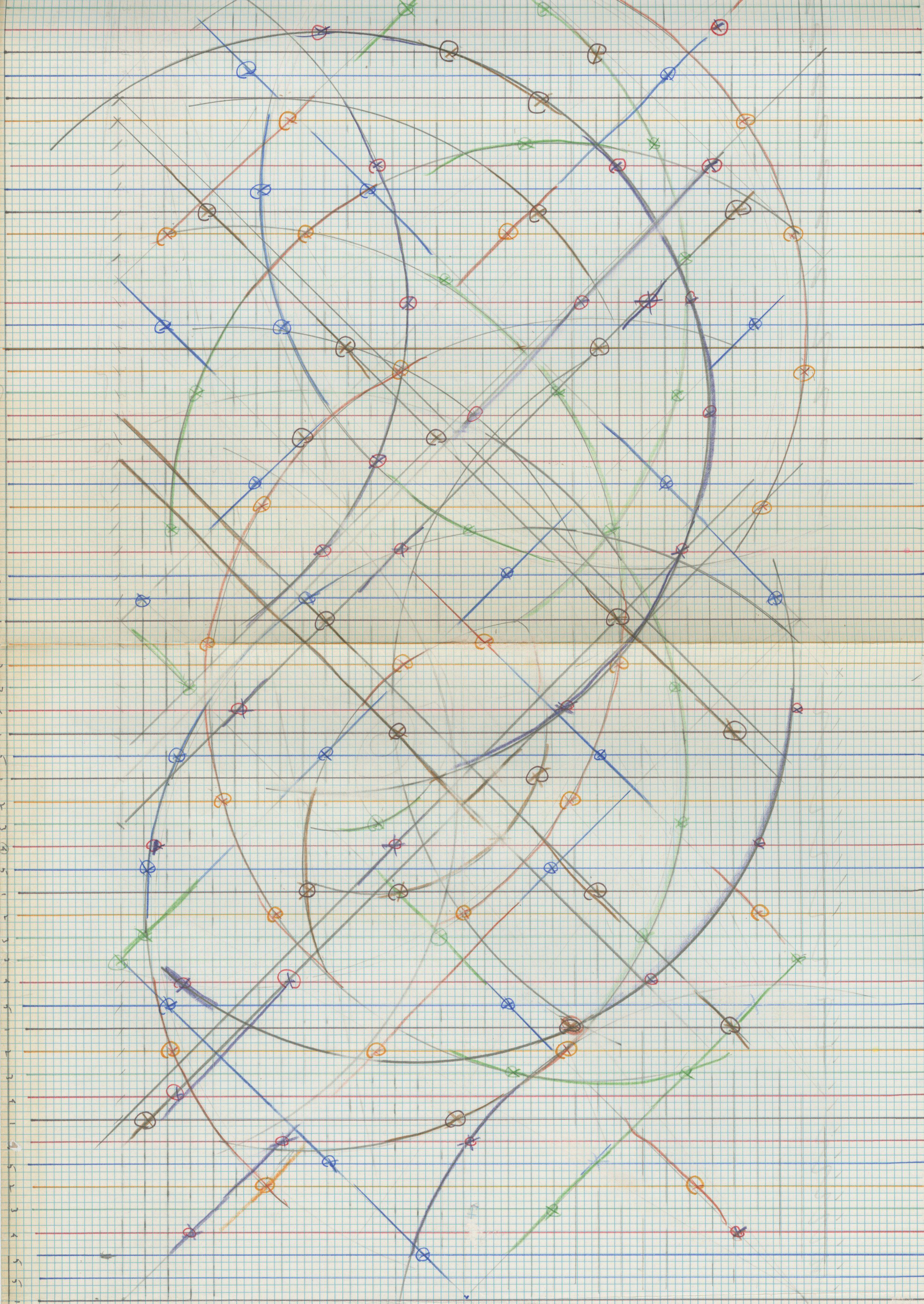 © Croquis de parcours manuscrits couleurs de la partie 4 "Return" de Relative Calm (1981) ayant servi à l'élaboration des maquettes pour les motifs lumineux. Lucinda Childs, Fond Lucinda Childs CN D.
© Croquis de parcours manuscrits couleurs de la partie 4 "Return" de Relative Calm (1981) ayant servi à l'élaboration des maquettes pour les motifs lumineux. Lucinda Childs, Fond Lucinda Childs CN D.
Lucinda and Bob have a lot in common. They're both left-handed, and they draw a lot. Bob is constantly doodling or writing. During a conversation, he’s always picking up a piece of paper and sketching an idea for a design, lighting, a costume, an object. There's always a desk for him in the rehearsal room. Lucinda works the same way: she always starts work on the choreography by drawing. I think that's where they converge, as Lucinda’s sketches for Bob’s original lighting plan suggest. They speak the same language and understand each other perfectly, without needing to talk much. Being in the middle can make you lose your mind!
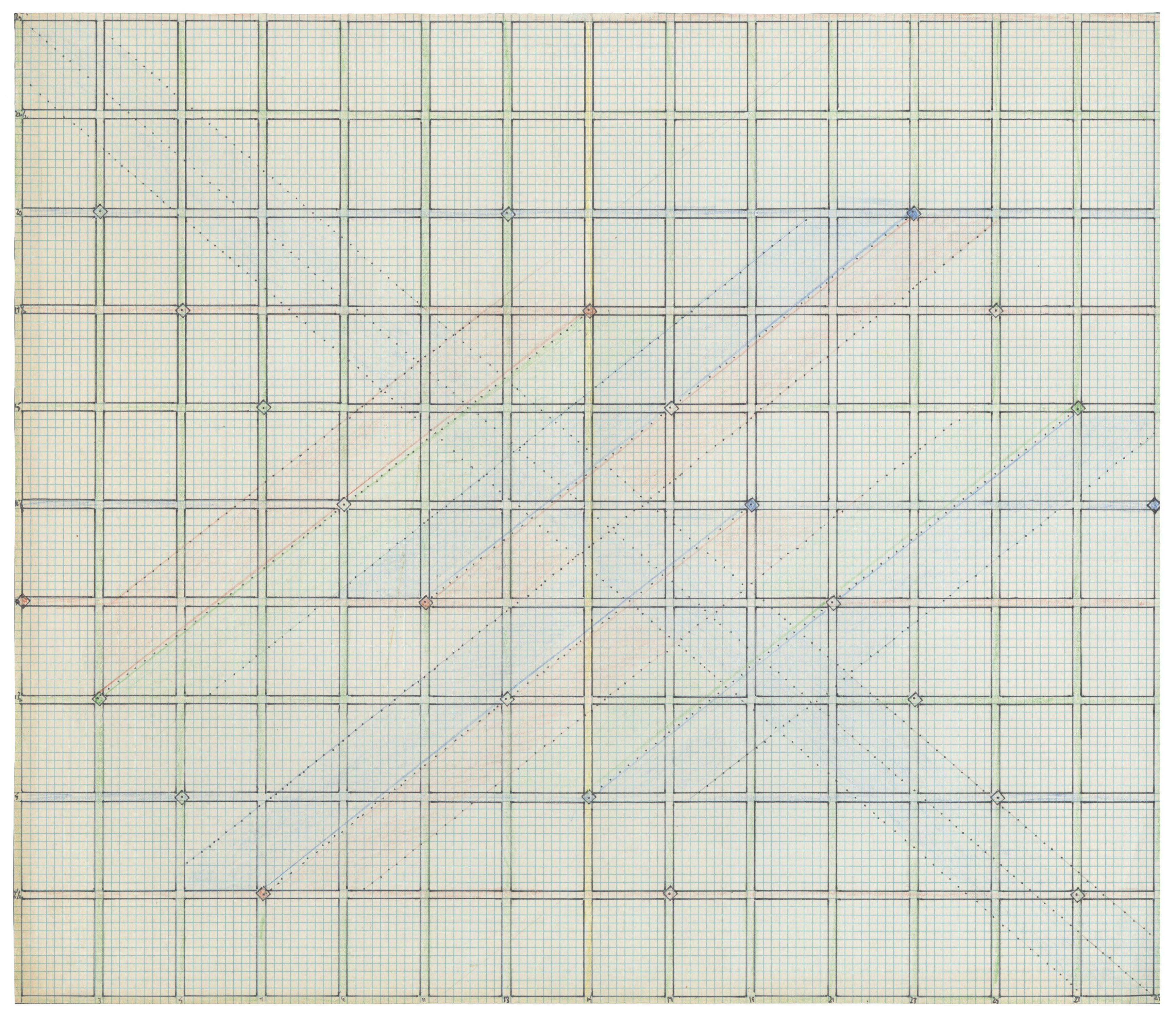 © Croquis de parcours manuscrit pour la partie 1 "Rise" de Relative Calm (1981). Lucinda Childs, Fond Lucinda Childs CN D.
© Croquis de parcours manuscrit pour la partie 1 "Rise" de Relative Calm (1981). Lucinda Childs, Fond Lucinda Childs CN D.
“Rise” is a mathematical equation to solve. The men start in the distance and the women at the front of the stage. By exchanging positions and crossing paths, the men end up on one side of the stage and the women on the other. On the drawing, the colored lines represent the dancers and their trajectories: three in red, three in blue, two in green. The first green line is probably the first woman, then a man, alternating. We can see that the diagonal line is very important, as in “Rise” everything is danced diagonally across the stage.
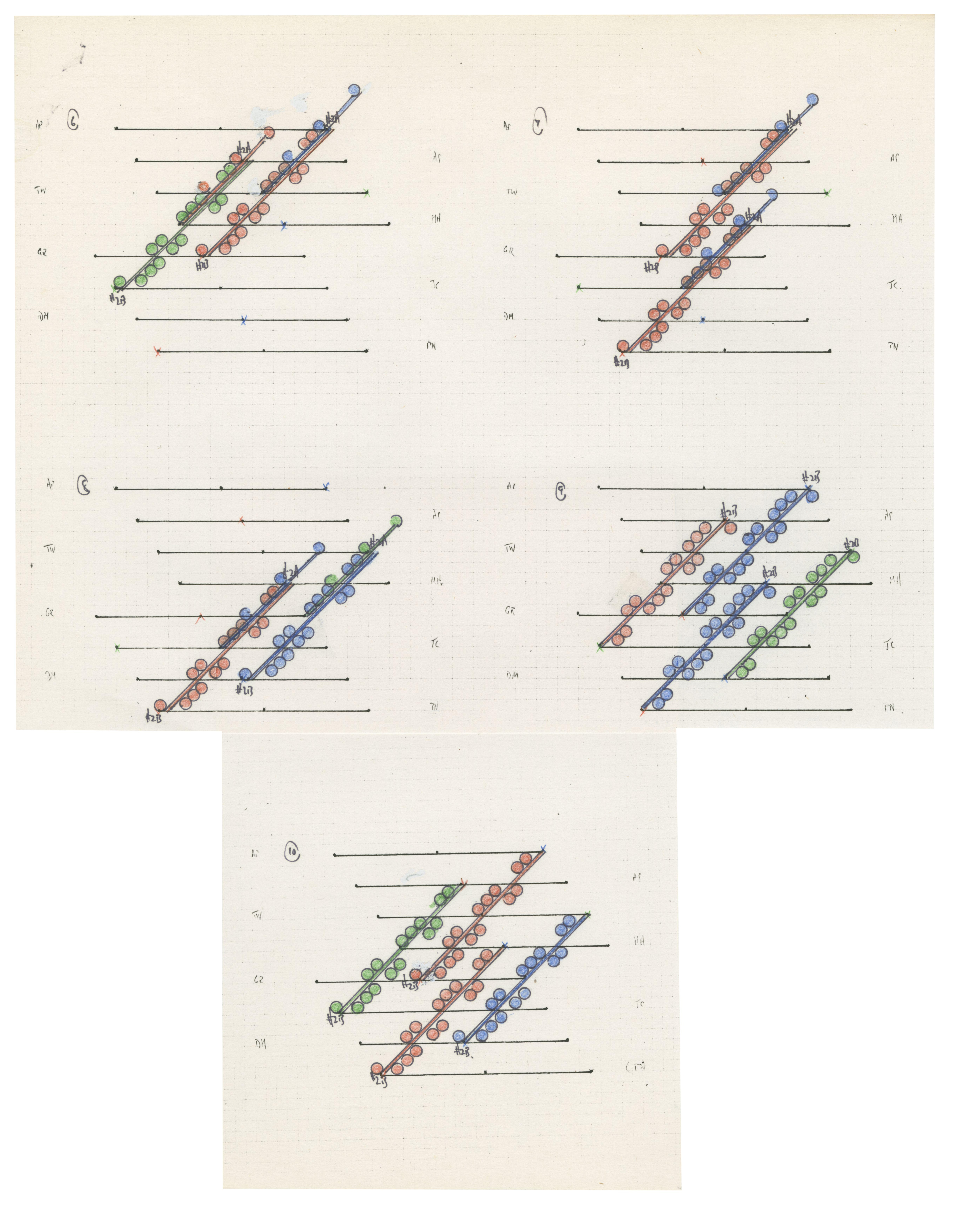 © Partition chorégraphique manuscrite pour la partie 1 : "Rise" de Relative Calm (1981). Lucinda Childs, Fond Lucinda Childs CN D. p.14
© Partition chorégraphique manuscrite pour la partie 1 : "Rise" de Relative Calm (1981). Lucinda Childs, Fond Lucinda Childs CN D. p.14
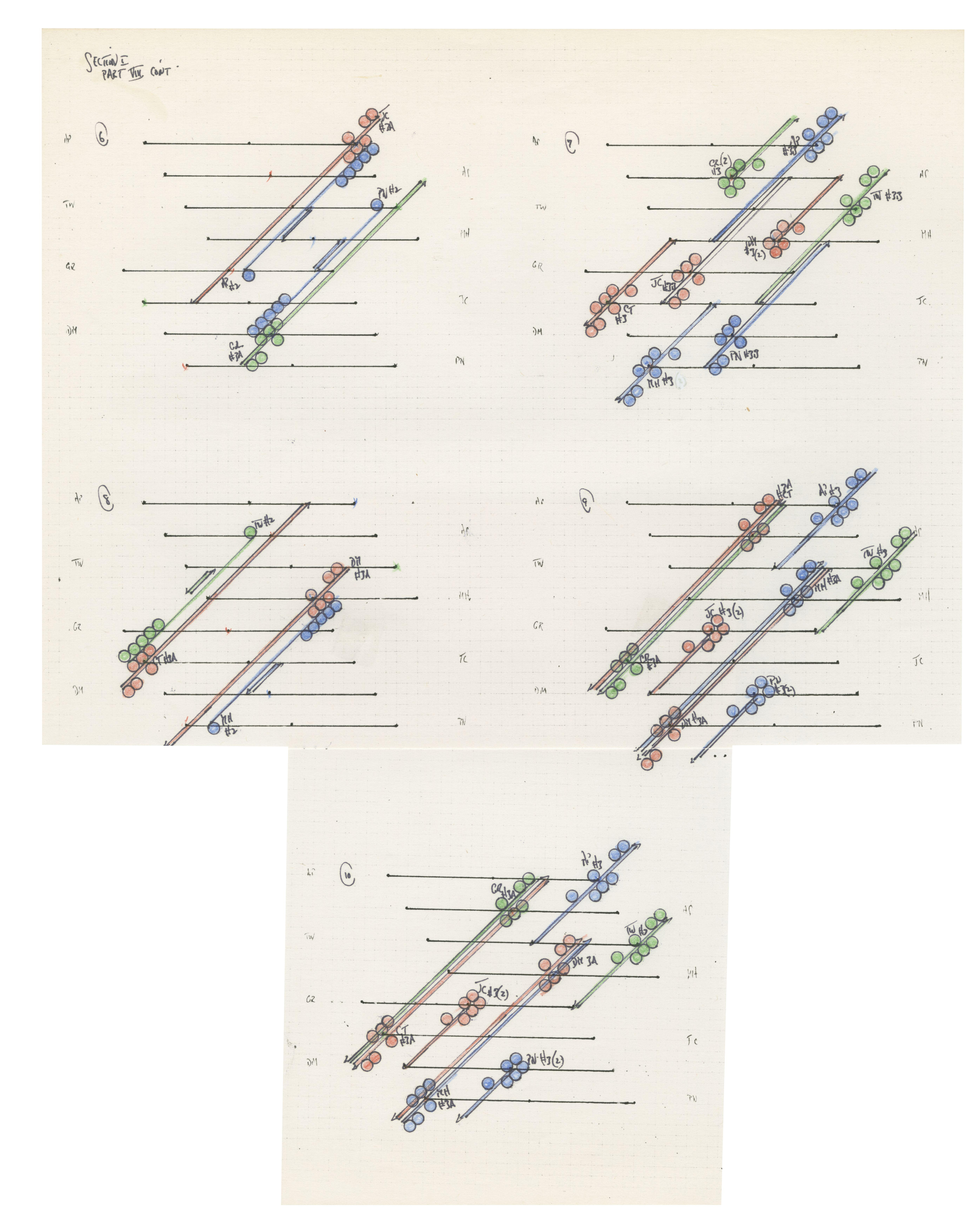 © Partition chorégraphique manuscrite pour la partie 1 : "Rise" de Relative Calm (1981). Lucinda Childs, Fond Lucinda Childs CN D. p.17
© Partition chorégraphique manuscrite pour la partie 1 : "Rise" de Relative Calm (1981). Lucinda Childs, Fond Lucinda Childs CN D. p.17
If you look at the score, you can see black lines that show the placement on stage and parallel diagonal lines for those famous crossings between dancers. Sometimes the lines don't even meet, because the path stops before they do. The small circles may be the rotations, or one of Lucinda’s codes for recognizing choreographic phrases. You can see that some performers have identical phrases, even if they don't cross paths with each other. The tiny letters written in pencil next to the lines are surely the initials of the performers in the original cast.
But I should specify that as dancers, we didn't have access to these drawings. Lucinda drew scores for herself, then made different diagrams for the dancers, and gave us sheets with the counts to help us find our way around the music. I recently found my old notes, which I thought I’d lost when I left the company. Unlike these drawings, which are very clean, my sheets have gone through a lot: they’ve been folded, crumpled and held in sweaty hands. During rehearsals, we all had our little pieces of paper, and at one point Lucinda would sometimes say: “Put them away.” So we had to manage without them. When we’d get lost, she’d come back with a notebook, open a page and say: “Look, you're on the red line and you've got to go there.” When you’re in motion, it's hard to understand the collective pattern that is being created. It’s as if Lucinda saw the dance from a different point of view, from above.
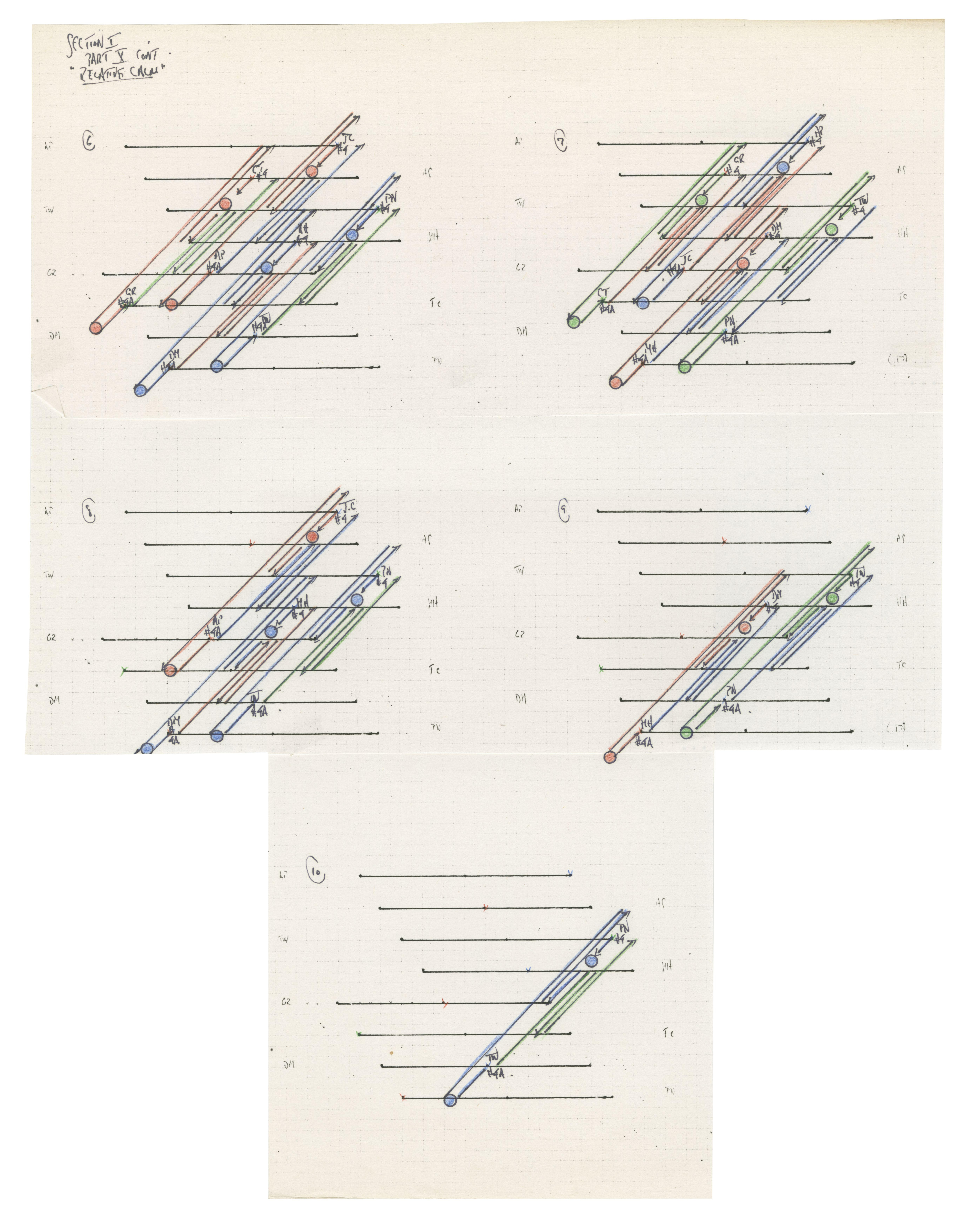 © Partition chorégraphique manuscrite pour la partie 1 : "Rise" de Relative Calm (1981). Lucinda Childs, Fond Lucinda Childs CN D. p.21
© Partition chorégraphique manuscrite pour la partie 1 : "Rise" de Relative Calm (1981). Lucinda Childs, Fond Lucinda Childs CN D. p.21
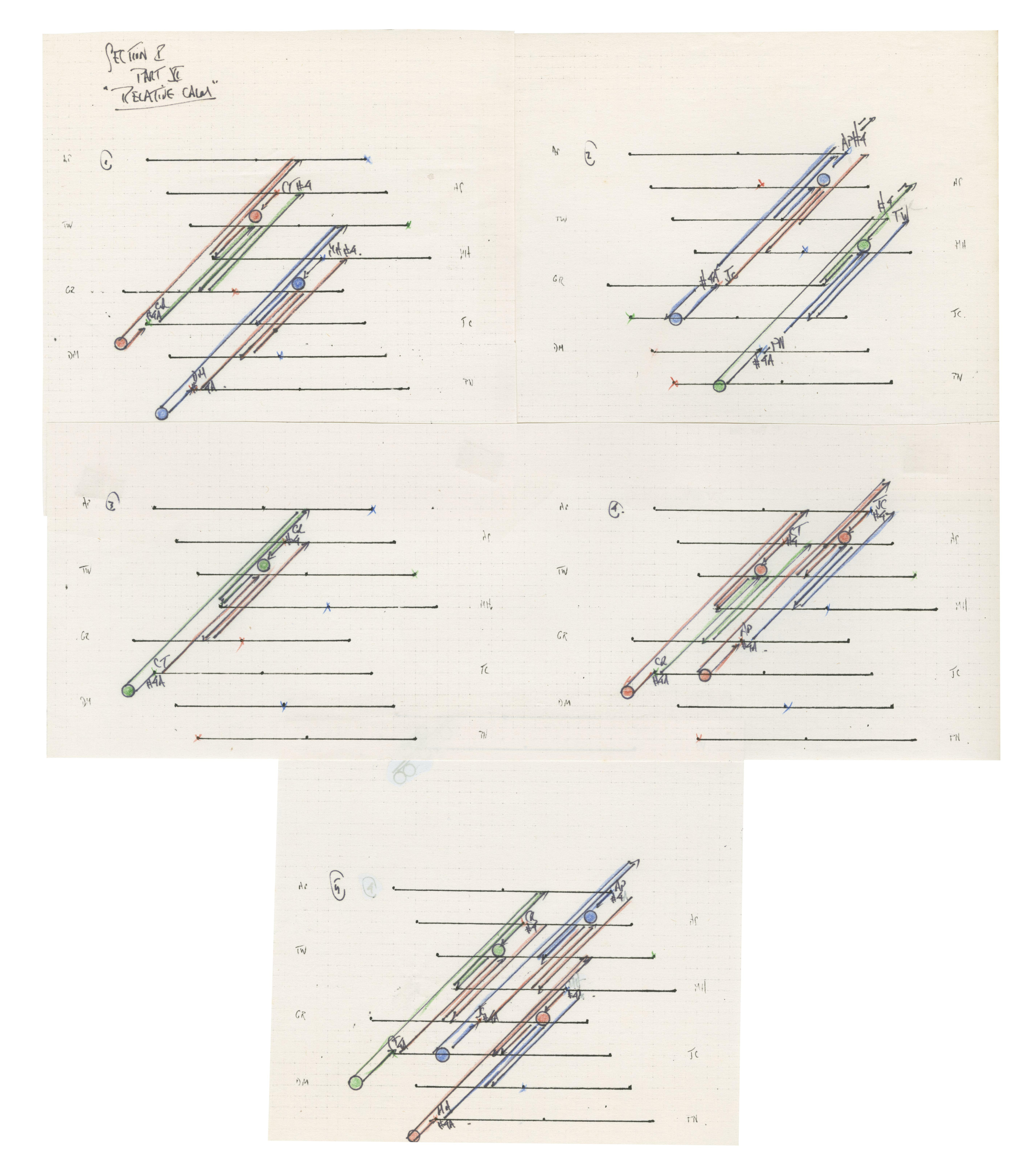 © Partition chorégraphique manuscrite pour la partie 1 : "Rise" de Relative Calm (1981). Lucinda Childs, Fond Lucinda Childs CN D. p.22
© Partition chorégraphique manuscrite pour la partie 1 : "Rise" de Relative Calm (1981). Lucinda Childs, Fond Lucinda Childs CN D. p.22
The score ends with a choreographed phrase where we walk and one where we jump. All the women do the same sequence, while the men do another. The initial puzzle is solved with the last crossing, the last trajectory. I find it fascinating. Over the years, Lucinda's pieces have become more and more complex, and I think she enjoys complicating the shapes of the line, the circle, interweaving the figures, manipulating the trajectories. I often tell my dancers that to be able to dance these pieces, you have to detach yourself from your emotions and be almost “clinical” about it. If you get distracted for a second, you're certain to make a mistake, and then there is no guarantee you'll be able to get back into the system of the piece. On some occasions, Lucinda had to request the curtain come down during a performance because we were completely lost. It’s especially true in silent works, where you don't even have the music to help you along. It's like being in a maze!
Lucinda's style is undeniably technically and physically challenging, but it's even more so mentally. I have noticed, however, that the longer you stay with the company, the more interesting the work becomes, as you come to understand and master Lucinda’s equations. I’m seeing this with the dancers in Relative Calm who have been here since the beginning of the process: they find more and more pleasure in the challenge, in discovering new things within a score they know by heart.
An interview by Léa Poiré
Léa Poiré is an independent journalist based in Paris and Lyon. After studying choreography and being in charge of the dance section and co-editor in chief for Mouvement magazine, she is now working in cultural journalism, media education, and she collaborates regularly with choreographer Mette Edvardsen as a researcher. She and Laura Capelle are editing the fourth issue of CN D magazine.
Relative Calm
Choreography: Lucinda Childs
Artistic director: Robert Wilson
Performers: MP3 Dance Project, directed by Michele Pogliani
Visuals at the top of the page :
1/3 Handwritten color path sketches from part 2 "Race" of Relative Calm (1981), used to create the models for the light motifs. Lucinda Childs, Fond Lucinda Childs CN D.
2/3 Handwritten color path sketches from part 4 "Return" of Relative Calm (1981), used to create the models for the light motifs. Lucinda Childs, Fond Lucinda Childs
CN D.
3/3 Handwritten color path sketches from part 2 "Race" of Relative Calm (1981), used to create the models for the light motifs. Lucinda Childs, Fond Lucinda Childs CN D.
